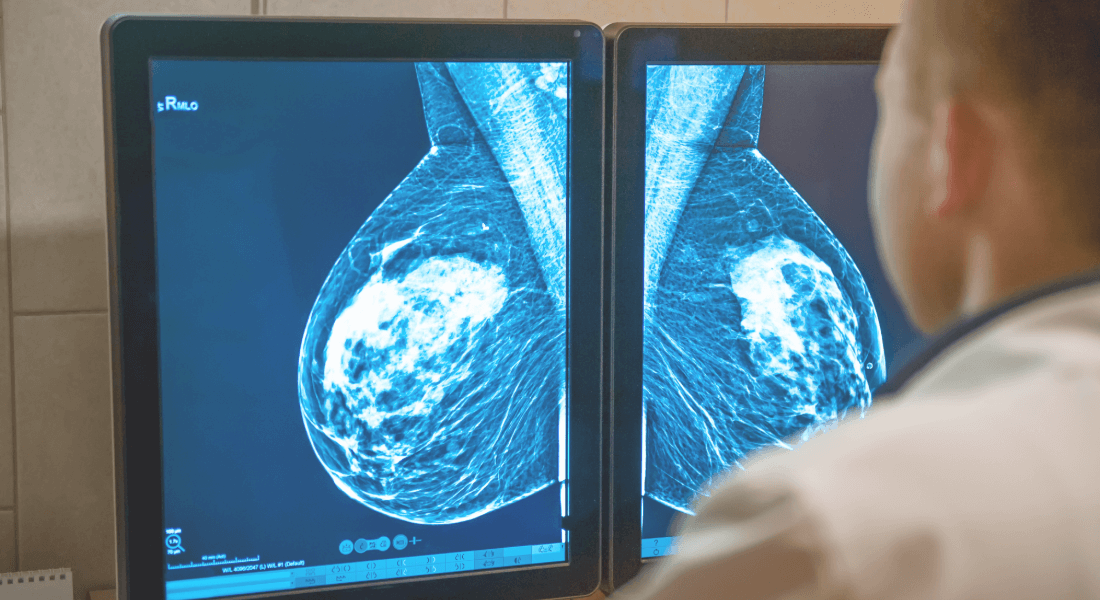A new gene-editing method enables researchers to more easily determine whether a patient has inherited an increased risk of developing cancer-before any symptoms appear. Researchers at Rigshospitalet have tested the method and believe it has the potential to save lives worldwide.

There may be hopeful news ahead for families with a history of breast and ovarian cancer.
Researchers from the University of Copenhagen and Rigshospitalet have developed and tested a new method that can determine whether a patient carries a hereditary genetic mutation that, in many cases, leads to these common forms of cancer.
"If we know a patient has a pathogenic mutation, we can intervene before the cancer has a chance to develop. For those already affected by the disease, we can treat them faster and more precisely. In the long run, this will save lives," says Maria Rossing, Clinical Research Associate Professor at the Department of Clinical Medicine, University of Copenhagen, and Chief Physician at Rigshospitalet.
In some cases, the cause of cancer lies in our genes. We are all born with genetic mutations, and although the term may sound alarming, most mutations are fortunately harmless.
The challenge for patients is that while researchers can identify both harmless mutations and those that cause disease, there remains a large group of genetic variants whose significance is still unknown.
"It's uncharted territory. Until now, we've only been able to inform patients that they have a mutation of unknown significance, and treating physicians haven't been able to use that information in clinical decision-making," says Maria Rossing.
She is one of the researchers behind a new study recently published in the scientific journal The Journal of Clinical Investigation. The study concludes that the method, developed at the Biotech Research and Innovation Center (BRIC) at the University of Copenhagen, is suitable for clinical use in hospitals. Read the study here.
Accurate Diagnosis Enables Better Treatment
One of the genes the researchers are focusing on is BRCA2 - a name that may not roll off the tongue, but which plays a major role in several types of cancer, including breast cancer, one of the most common cancers in Denmark. BRCA2 mutations are also linked to ovarian, pancreatic, and prostate cancers.
Using the new method, the researchers analyzed 54 variants of BRCA2 mutations of and can now determine whether they are disease-causing. Until recently, the effects of these mutations were unknown - an uncertainty that significantly impacted patients' treatment options.
"When we can provide an accurate diagnosis, we can offer targeted treatment. For women who carry a disease-causing variant, we can offer preventive care through early detection and prophylactic surgery. But we can't do that unless we know for sure whether a mutation leads to disease," says Maria Rossing.
Together with her research group at the Department of Genomic Medicine at Rigshospitalet, she collaborated with BRIC to test the method in a clinical setting. She believes that if the method is widely implemented, it could help save lives.
Global Impact for Patients
Today, many patients are already tested for BRCA2 mutations, but in many cases, the result is "a variant of unknown significance".
In the study, researchers examined genetic mutations in patients from around the world who carry such variants. Their findings - whether a mutation is disease-causing or not - are now being shared in international databases.
"When researchers or doctors anywhere in the world search for these 54 variants in the databases, they'll see our classification. This has implications far beyond Danish patients," says Maria Rossing.
Her hope is that the method will be implemented on a large scale, enabling researchers worldwide to classify the many variants whose significance is still unknown.
About the Method
The method tested at Rigshospitalet is based on a new technology called CRISPR-Select, developed at BRIC. This gene-editing technology allows researchers to test the effect of a genetic mutation.
They do this by using gene-editing techniques to cell-models that carries the mutation in question. This cell-model is exposed to a particular chemotherapy agent.The results are combined with the latest international guidelines for variant classification.
Together, these approaches provide a precise picture of whether a genetic variant of unknown significance is disease-causing or not.
Although the method is not yet fully implemented, the collaboration between BRIC at the University of Copenhagen and Rigshospitalet has enabled researchers at the Department of Genomic Medicine to test it in a hospital setting.






